
Expressing your emotions and impressions from reading an article or watching a film seems easier than it is. You can feel overwhelmed after watching Inception by Christopher Nolan, but don’t know what exactly moved you. Was it the music or the main character’s life drama? Writing a reaction paper can be helpful to put together your own thoughts and feelings. Also, discussing things that you like or dislike helps develop your worldview and argumentation skills.
Our team prepared a list of topics for a reaction paper that may inspire you to research something new. What’s more, you can read dozens of excellent sample papers on some of the topics to see how others organized this type of writing piece. Also, we made an ultimate guide for you on how to write a reaction paper. Be sure to check it out!
🔥 10 Best Reaction Paper Topics to Write on
- Ray Bradbury’s Dandelion Wine.
- Ralph Ellison’s “The Invisible Man.”
- My take on George Orwell’s “1984.”
- What I think of The Sound and the Fury.
- “Native Son” by Richard Wright.
- What did I like about “The Stranger”?
- “Democracy in America” by Tocqueville.
- My impression of “Lord of the Rings.”
- “Winnie the Pooh” by Alan Milne.
- William Shakespeare’s “King Lear.”
✨ What Is a Reaction Paper
A reaction essay or paper is a writing piece where you’re expressing your personal opinion and feelings after watching a movie, reading a book or an article, or observing an artwork. The distinctive feature of this genre is that you should provide more of your vision rather than related facts and arguments from the critics. A reaction paper might be similar to a review; however, they are different.
Let’s see what their significant dissimilarities are.
- In a review, you refer to the critics of the work you’re describing, while in a reaction paper, you’re displaying personal feelings and emotions.
- A review is a more formal genre, so you shouldn’t use the first-person pronoun. In a reaction paper, you should refer to personal experience.
Writing your opinion on a specific book or article is quite a usual task for students of different levels. You may encounter this type of assignment whether you’re at a middle school or university. While expressing your thoughts seems undemanding, but it becomes complicated when you have to stick to a specific paper structure.
Reaction papers, also known as response papers, summarize what you feel and think about something you’ve read or seen. It can be a book, article, paper, film, etc. Your key objective is to display your impressions, stating what you liked and disliked about the subject of your work. The whole process of working on a reaction paper can consist of three main phases:
- Prewriting phase
- Organizational phase
- Writing phase
In the next block, we will discuss each of them in detail.
✍️ Write a Reaction Paper: Outline and 3 Simple Steps to a Perfect Essay
As we already mentioned, the essay writing process can be split into three stages. Each of them is important, but we will reveal a secret to you – 75% of your success in creating a reaction paper depends on the first two stages: prewriting and organizational phase.
Why so?
The thing is that if you were attentive to details while watching a movie or reading a book, you’re more likely to understand the topic better. If you manage to create a compelling yet straightforward outline, it will be much easier to complete the whole piece.

Now, when you know this trick, let’s learn about each phase in detail!
During the prewriting phase, you read or watch the assigned text or motion picture. It’s helpful to ask yourself some questions and write down notes while doing that. These questions will help you organize your primary thought and impressions. They may be like this:
- Do I agree with the author? Why?
- What are the main symbols in this movie/ book/ artwork?
- Is the plot or argumentation logical and clear?
- Are there any inconsistencies?
- Does this piece resemble anything I’ve seen or read before?
- Would I like to watch or reread it?
- Would I recommend it to the others?
When you finish taking the notes, and everything seems clear, you can move to the organizational phase.
The standard sectioning of any academic paper consists of an introduction, main body, and a summary.
Introduction and summary aim at discussing your paper and the results of your investigation in general, while the main body section displays each of your thoughts, arguments, or examples in detail. Recalling the prewriting phase, you can use the answers you’ve given to those questions in different parts of your reaction paper.
Finally, the answer to the questions ‘Would I like to watch or reread it?’ or ‘Would I recommend it to others?’ may become your summary topic sentence.
As you finish organizing your notes and allocating them to different sections of your paper, you can finally move to the writing phase.
If you’ve prepared well, the writing phase won’t be difficult for you. That’s why the previous steps are crucial.
📝 How to Write a Thesis Statement for a Reaction Paper
In the previous section, we talked about a general outline of a reaction paper; now, let’s get to know more about some paper’s key milestones. The first of them is a thesis statement. It’s usually a sentence or two representing the general attitude or point of view regarding the subject. In the case of a reaction paper, it can be the author’s most significant impressions of a movie, book, artwork, or article.
We’ve already mentioned the questions that you can ask yourself during the prewriting phase. The response to the very first question – Do I agree or disagree with the author? – may turn into your thesis statement.
🤔 How to Write an Introduction Paragraph for a Reaction Paper
Still wondering how to start a reaction paper? It’s much easier than it seems! Here are a few steps you should take. First, give your readers the context presenting what you were reading or watching. Then, add a few lines about the author or the history of this piece.
However, if your task is to describe the assigned subject in more detail, write it in a paragraph or two within the introductory part. After this description, write the thesis statement, which should be a compelling thought summarizing the whole idea of your paper. The last sentences of your introduction may state the key aim of your writing piece.
An excellent point to keep in mind:
Your introduction’s last sentence or sentences should form a smooth transition from this part to the main body section. Then, the reader won’t lose interest in the subject and will understand your perspective better.
📖 Reaction Paper: Body and Conclusion
The main body is the section that can consist of multiple paragraphs depending on your assignment and topic. There are no defined rules for this, but we have some recommendations for you.
Previously, we gave you a list of questions for the prewriting phase. So, now you can turn your answers into paragraphs in the main body. Each can be displayed as a separate paragraph using supportive examples from the movie or book you were assigned. You may use the following paragraph structure:
- Topic sentence
- Detail-example-quotation
- Summarizing sentence
As you come to a conclusion or summary, you can use the last questions to write. In a reaction paper conclusion, the author usually restates the thesis statement supporting it with some new ideas mentioned in the main body.
If this seems too complicated, don’t worry; check the sample reaction essay below!
🔖 Reaction Paper: Example
The essay below is an excellent example of a neat reaction paper structure. The author divided their paper into sections, adding subheadings. This helped increase the text’s readability. The first section is introductory; it gives us the context and author’s story.
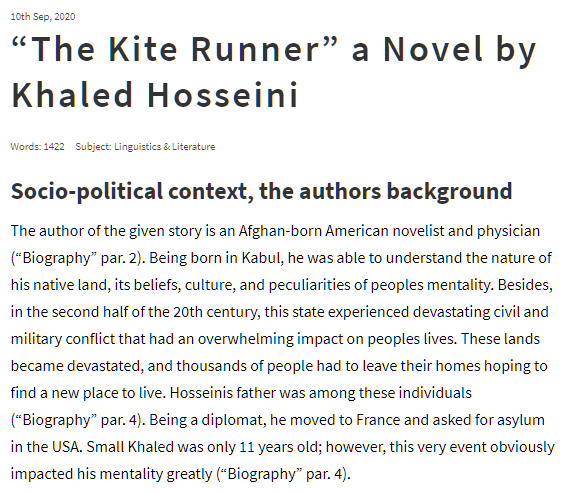
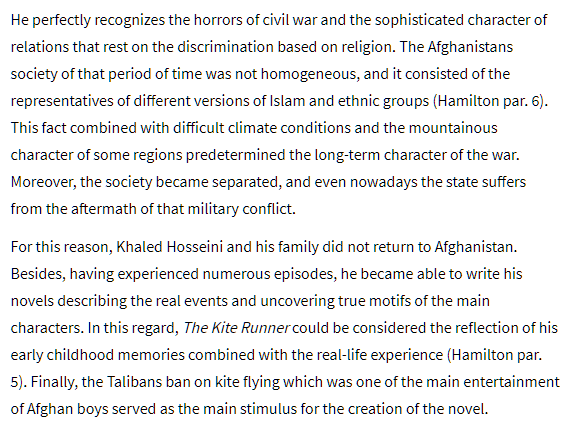
Then, the author provides a brief summary of the book’s plot. If you’re discussing a literary piece that’s not as well-known as The Great Gatsby, for instance, it’s beneficial to present it shortly. No need to provide too many details; you should mention only the most crucial plot milestones.
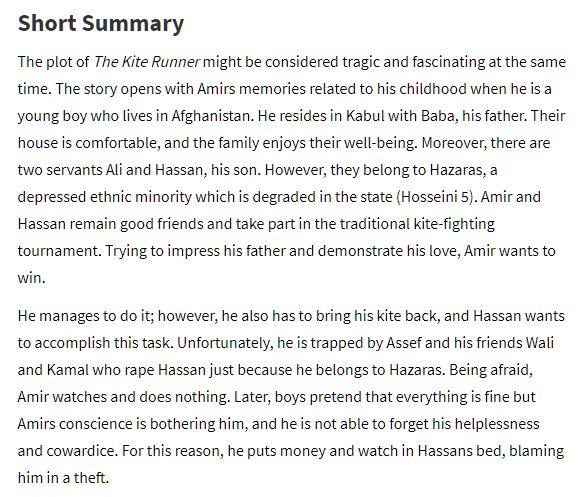
After presenting a brief plot summary, the author gives a list of main characters and those who are also interesting in following through the story. Also, they mention key subjects and issues of the book.
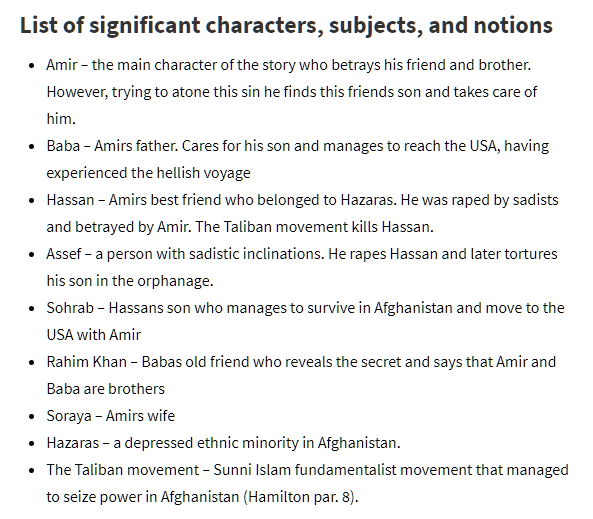
The detailed listing of crucial topics and citations in the book shows the author’s deep understanding of it. This is the level of engagement you should aim at. If you’re writing a reaction paper, using a bulleted list is the most convenient way to present this kind of information.
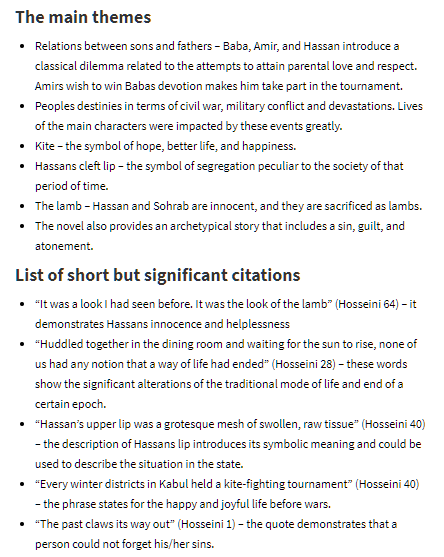
Last but not least, the author describes significant literary elements and their personal impressions. In this part, you can answer the questions ‘Do I agree with the author?’ and ‘Will I recommend this book?’
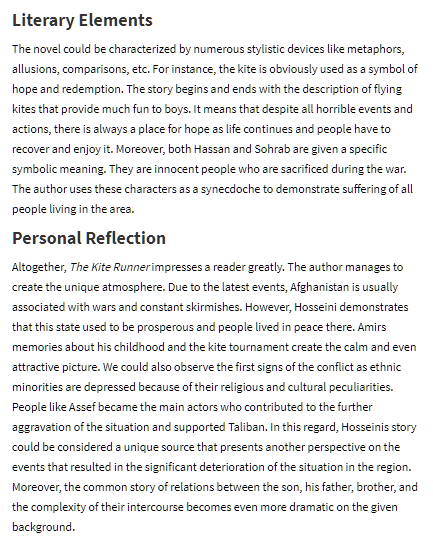
📰 How to Write a Reaction Paper to an Article
You may encounter dozens of articles through your studies at school, college, or university. Some of them may seem compelling and worth reading again, and some may not. Expressing why you agree or disagree with the author is essential for a better understanding of the topic in general. Sometimes students manage to prove that the article’s author had made a mistake in their research or experiment. An open discussion that you can start by responding to somebody’s report will influence your studies’ field in the right way.
Writing a reaction paper to an article is different from those in the previous section, mainly because you need to provide strong arguments to prove your perspective. Here, your emotions become a lower priority. Still, same as for writing about movies or books, you should be wholly engaged in the article you’re reacting to.
Remember that your paper’s structure and its readability are crucial, but don’t also forget about other things that may ruin the best work. One of them is showing disrespect to the article’s author. Even if you disagree with this person, expressing negative rhetoric regarding them is not the best way to prove you’re right.
🎥 How to Write a Reaction Paper to a Movie
Cinematography can be a powerful place to unveil various social, political, or interpersonal issues. Contrary to the books, they offer a ready-made envisioned sequence of events, characters, and much more, so they are easier to comprehend and less time-consuming.
However, some movies may be more profound than they seem, and all the hidden symbols can be less visible to an average spectator. For instance, the award-winning Christopher Nolan works like Inception or Tenet are the ones many watch repeatedly to discover new details and prove their theories.
There’s no doubt that movies sometimes have a therapeutic effect on us, that they may make us change our opinion on a specific issue. That’s why writing a reaction paper to a movie can be highly engaging and fun.
Start by watching a film and taking notes about the moments you like or dislike. Then, write down some phrases or dialogues you find catchy and interesting to dwell on. If there’s anything you haven’t understood about the plot, it would be beneficial to rewatch that moment or whole movie. It’s crucial to comprehend every single detail about the film, so that your evaluation is fair.
📗 How to Write a Reaction Paper to a Book
Reading books is an essential study routine. Still, it’s not enough to simply look through the pages to learn something. Reading should be a mindful process. Even if you’re not assigned a reaction paper on a particular book, it would be highly beneficial to take notes while reading and then give them a fundamental analysis.
Your teacher may assign you writing a reaction paper to a fictional or non-fictional book. Although the preparation process may differ, yo may follow the same structure for both of them. Take these steps to create an excellent reaction paper:
- Write down interesting thoughts from the book while reading. Also, pick some phrases that describe the main characters.
- Answer the questions about the text – whether you agree or disagree with its key thoughts, would you recommend it or not, etc.
- Organize your thoughts and notes, following a bsic outline – introduction, main body, conclusion.
- Expand the outline and finalize the paper.
- Check grammar and punctuation, edit if needed.
💡 300 Reaction Paper Topic Ideas
If you are bored of overused topics for reaction papers, we have a magic pill for you. Below, you can find an extensive list of exciting and sometimes even challenging topics about books, movies, articles, music, and artworks. There’s plenty of things to choose from – from the Mona Lisa’s smile to the newest album by Lady Gaga. We hope that you will get inspired by these!
📔 Book Reaction Paper Topics
- My thoughts on 1984 by George Orwell
- Charlie and the Chocolate Factory: my thoughts on the book
- Jack London: The Call of the Wild
- A Clockwork Orange by Anthony Burgess
- Alexandre Duma: The Count of Monte Cristo
- Crime and Punishment by Fyodor Dostoyevsky
- Lu Xun: Diary of a Madman and Other Stories
- Anne Frank: The Diary of a Young Girl
- Douglas Adams: The Hitchhiker’s Guide to the Galaxy
- The Hobbit by J. R. R. Tolkien
- Les Misérables, a novel by Victor Hugo
- What impressed me in The Little Prince by Antoine de Saint-Exupéry
- The Mystery of Prince of Denmark by William Shakespeare
- Little Women by Louisa May Alcott
- My impressions of The Lord of the Rings by J.R.R. Tolkien
- My thoughts on The Old Man and the Sea
- One Hundred Years of Solitude, a novel by Gabriel Garcia Marquez
- Pride and Prejudice by Jane Austen
- Kazuo Ishiguro: The Remains of the Day
- Slaughterhouse-Five by Kurt Vonnegut
- The Stranger by Albert Camus
- Ulysses by James Joyce
- War and Peace by Leo Tolstoy
- Winnie-the-Pooh by A. A. Milne
- My impressions of The Wonderful Wizard of Oz
- Dracula by Bram Stoker
- The Trojan War: A New History by Barry Strauss
- My impressions on Fahrenheit 451, a book by Ray Bradbury
- Great Expectations a novel by Charles Dickens
- Harry Potter by J.K. Rowling
- The Great Gatsby, a novel by Francis Scott Fitzgerald

- The Iliad by Homer
- Jane Eyre by Charlotte Brontë
- My thoughts on Lolita, a novel by Vladimir Nabokov
- Love in the Time of Cholera by Gabriel Garcia Marquez
- Pippi Longstocking by Astrid Lindgren
- Harlem Ghetto in The Lesson by Tony Bambara
- The Shadow of the Wind written by Carlos Ruiz Zafón
- Milan Kundera: Immortality
- The Unbearable Lightness of Being by Milan Kundera
- Dreams from My Father by Barack Obama
- A Brief History of Time by Stephen Hawking
- A Treatise of Human Nature by David Hume
- Frank Hagan’s textbook Introduction to Criminology
- The Wealth of Nations by Adam Smith
- The Path to Blitzkrieg, a book by Robert Citino
- How Democracies Die, a book by Steven Levitsky and Daniel Ziblatt
- Homo Deus by Yuval Noah Harari
- Games People Play by Eric Berne
- The Death of Expertise, a nonfiction book by Tom Nichols
- Want by Lynn Steger Strong
- Hunger by Roxane Gay
- The Alchemist by Paulo Coelho
- The 7 Habits of Highly Effective People written by Stephen R. Covey
- Gender roles: What’s That Smell in the Kitchen by Piercy
🎞️ Movie Reaction Paper Topics
- Thoughts on The Birth of a Nation movie
- Mad Max: Fury Road by George Miller
- The Godfather by Francis Ford Coppola
- 8 ½ by Federico Fellini
- Parasite by Bong Joon Ho
- The Shining by Stanley Kubrick
- A Clockwork Orange by Stanley Kubrick
- 12 Angry Men drama movie
- My thoughts on Blade Runner and Blade Runner 2049
- Reservoir Dogs by Quentin Tarantino
- Tenet by Christopher Nolan
- The movie The Boy in The Striped Pajamas by Mark Herman
- Call Me By Your Name by Luca Guadagnino
- American Psycho by Mary Harron
- The film Memento by Christopher Nolan
- The Great Dictator by Charlie Chaplin
- Pulp Fiction by Quentin Tarantino
- Star Wars by George Lucas
- La Dolce Vita movie by Federico Fellini
- The Matrix by the Wachowskis
- The film Anatomy of Hate by Mike Ramsdell
- Back to the Future by Robert Zemeckis
- Lady Bird by Greta Gerwig
- The Social Network by David Fincher
- Baby Driver by Edgar Wright
- The Foreigner by Martin Campbell
- Reacting to Interstellar
- My opinion on the movies about James Bond
- Night of the Living Dead, a movie by George Romero
- Scary Movie by Keenen Ivory Wayans
- Wanda Vision – a cool vintage story
- Impressions of the Chernobyl mini series
- 21 Jump Street by Christopher Miller and Phil Lord
- The Grand Budapest Hotel by Wes Anderson
- The Square by Ruben Östlund
- My impressions of the last season of Game of Thrones
- The Pianist movie by Roman Polanski
- Legend by Brian Helgeland
- Knives Out by Rian Johnson
- Sleepers, a movie by Barry Levinson
- My thoughts on Minding the Gap by Bing Liu
- Jiro Dreams of Sushi, a documentary by David Gelb
- The Invisible War by Kirby Dick
- Journey Through French Cinema by Bertrand Tavernier
- Sholem Aleichem: Laughing in the Darkness by Joseph Dorman
- Three Billboards Outside Ebbing, Missouri
- The movie Story of a Puppet
- The Irishman by Martin Scorsese
- Marriage Story by Noah Baumbach
- Thoughts on the Harry Potter movies
- The Constant Gardener, a movie by Fernando Meirelles
- My thoughts on Jim Jarmusch’s movies
- My impressions of The Wolf of Wall Street
- Lobster by Yorgos Lanthimos
- The Gentlemen by Guy Ritchie
- Magic Mike by Steven Soderbergh
- A Beautiful Day in the Neighborhood
- The Shawshank Redemption motion picture by Darabont
- Booksmart by Olivia Wilde
- The Salt of the Earth – an amazing motion picture
- My impressions of Soul by Pixar
- Thought on the movies by Edgar Wright
- Personal impressions of Catch Me If You Can
🎭 Artwork Reaction Paper Topics
Like movies and literature, other artworks like paintings or sculptures can impress or even change our lives. It’s hard to overrate Mona Lisa or Michelangelo’s David’s impact on society through the centuries. However, the perception of fine arts may be more complicated than of books or films. Why so?
Some artists, for instance, Pablo Picasso, believed that trying to understand a painting or a sculpture is a losing game. This famous artist once said:

While in books or films we may catch the author’s explanation of his vision or just an implication, fine arts give us more freedom to discover what our mind and emotions lead us to. And it contradicts what the author or art critics declare quite most of the time.
We gathered legendary and less well-known artworks in the list below. It’s your chance to look at them once again and get inspiration for your paper!
- Mona Lisa by Leonardo Da Vinci
- My thoughts on The Starry Night by Vincent Van Gogh
- Girl with a Pearl Earring by Johannes Vermeer
- The Birth of Venus by Sandro Botticelli
- The Kiss by Gustav Klimt
- The Arnolfini Portrait by Jan van Eyck
- Personal impressions of the Hieronymus Bosch’s paintings
- A Sunday Afternoon on the Island of La Grande Jatte by Georges Seurat
- Les Demoiselles d’Avignon by Pablo Picasso
- Marc Chagall’s paintings
- Le Déjeuner sur l’herbe by Édouard Manet
- Collective Invention by Rene Magritte
- Golconda by Rene Magritte
- The Persistence of Memory by Salvador Dali
- Salvador Dali: The Temptation of Saint Anthony
- Galatea of the Spheres by Salvador Dali
- My thoughts on Composition with Red, Blue, and Yellow by Piet Mondrian
- The hidden treasures of Las Meninas by Diego Rodríguez de Silva y Velázquez
- My impression of Guernica by Pablo Picasso
- Kathe Kollwitz’s Death and the Mother painting
- Liberty Leading the People by Eugène Delacroix
- Wanderer above the Sea of Fog by Caspar David Friedrich
- Nighthawks by Edward Hopper
- Campbell’s Soup Cans by Andy Warhol
- My impressions of Maman by Louise Bourgeois
- My thoughts on Damien Hirst’s artworks
- Girl with Balloon by Banksy
- Olympia, the paiting by Edouard Manet
- Flower Ball by Takashi Murakami
- Balloon Dogs by Jeff Koons
- Self Portrait by Frida Kahlo
- Remembering an installation by Ai Weiwei
- Orange, Red, Yellow by Mark Rothko
- Reaction to the Number 5, 1948 painting by Jackson Pollock
- Impressions of Pietà by Michelangelo
- David by Michelangelo
- Dama Velata by Antonio Corradini
- Apollo and Daphne by Gian Lorenzo Bernini
- Leonardo Da Vinci painting – The Last Supper
- Winged Victory of Samothrace
- The Thinker by Auguste Rodin
- Psyche Revived by Cupid’s Kiss by Antonio Canova
- Le Génie du Mal by Guillaume Geefs
- The Endless Column, a sculpture by Constantin Brâncuși
- Edward Weston: Pepper No. 30
- My thoughts on The Venus of Willendorf statue
- Dog by Alberto Giacometti
- Reclining Figure by Henry Moore
- In and Out of Love by Damien Hirst
- Impressions of Fountain by Marcel Duchamp
- My thoughts on Yayoi Kusama’s installation art
- Gaia Mother Tree by Ernesto Neto
- Forest of Numbers by Emmanuelle Moureaux
- The Rubicon by Jason Decaires Taylor
- A mural by Dmitri Vrubel on the ruins of the Berlin Wall
- Make Art Not War by Shepard Fairey
- Nobody Likes Me by Iheart
- Hollow by Katie Paterson and Zeller & Moye
- Mirage house by Doug Aitken
- US-Mexico border wall seesaws by Rael San Fratello
🎵 Music Reaction Paper Topics
Music, same as fine arts, is more abstract and subjective than literature and cinematography. A charming melody for one can sound intimidating for the other. Music is a powerful tool that can enforce visual arts. For instance, in films, it combines with the moving picture to impact viewers. Music can be played in museums to create a specific atmosphere and let visitors immerse themselves in it. Different songs and melodies can influence our mood, and it’s interesting to observe how it impacts us.
Writing a reaction paper about a song or melody you like or about the one you hear for the first time is a curious experience. You may get numerous insights and understand how music relates to your personality. Check the topics for the music reaction paper we prepared for you below!
- Music as a part of life.
- Peer Gynt Suite No. 1 Op. 46: Morning Mood by Edvard Grieg
- Symphony No. 5 in C minor by Ludwig van Beethoven
- Impressions of The Four Seasons by Antonio Vivaldi
- Thrilling classics: The Valkyrie: Ride of the Valkyries by Richard Wagner
- Nocturne No. 2 by Frédéric Chopin
- Carmina Burana: O Fortuna by Carl Orff
- Swan Lake Suite, Op. 20: Scene by Pyotr Ilyich Tchaikovsky
- Erik Satie – Gymnopédie No. 1
- Requiem, K. 626: Lacrimosa Dies Illa by Wolfgang Amadeus Mozart
- Suite bergamasque, L 75: Clair de Lune by Claude Debussy
- Hungarian Dance by Johannes Brahms
- Carmen Suite No. 2: Habanera by Georges Bizet
- Mainly Mozart concert
- Egmont, Op. 84: Overture by Ludwig van Beethoven
- Für Elise by Ludwig van Beethoven
- Ella Fitzgerald – an iconic jazz singer
- Legendary songs by Frank Sinatra
- La Vie en Rose by Edith Piaf
- Masterworks of 20th-century Music
- My impressions of the album Bridge Over Troubled Water by Simon and Garfunkel
- Electric Ladyland an album by Jimi Hendrix
- My thoughts on Bob Dylan’s music
- Impressions of A Night at the Opera by Queen
- Bob Marley’s Running Away Song
- Dwelling on the Joy Division’s album Closer
- Surrealistic pillow a music album by Jefferson Airplane
- Off the Wall by Michael Jackson
- Rumours by Fleetwood Mac
- Impressions of David Bowie’s music
- The Wall by Pink Floyd – one of the greatest albums of all times
- Nevermind by Nirvana
- My thoughts on the Revolver music album by The Beatles
- Modern classics: Yann Tiersen and Ludovico Einaudi
- Justified an album by Justin Timberlake
- Nick Cave and the Bad Seeds: band story and music
- Lady Gaga – The Fame
- Late Registration by Kanye West
- My impressions of Drake’s music
- Lana Del Rey – Born to Die
- Turn on the Bright Lights by Interpol
- Impressions of the music by Daft Punk
- Modern romantics: the album Whatever People Say I Am, That’s What I’m Not by Arctic Monkeys
- Legendary album Back to Black by Amy Winehouse
- In Rainbows by Radiohead
- Kid A by Radiohead
- Portishead: Third
- Elephant an album by The White Stripes
- Innerspeaker by Tame Impala
- Toxicity by System Of A Down
- Plastic Beach by Gorillaz
- Music by Muse: personal impressions
- An Awesome Wave by alt-J
- In Tongues by Joji
- Hooverphonic: modern vintage
- Thoughts of contemporary disco-pop music
- Impressions of K-pop
- Asian pop rock
- Music by XXXTentacion
- Trap music and gangsta rap today
🗞️ Article Reaction Paper Topics
- Learning at Work, article by Stephen Billet
- Infusing critical thinking into an employability skills program: the effectiveness of an immersion approach article by Sophie Kennedy
- Writing Assessment and Cognition by Paul Deane
- Farai Mamina Mutimusakwa: Relationship Between Job Analysis, Job Description & Job Specification
- Beauty Standards: “The Body Myth” by Rebecca Johnson
- Model of Employee Performance: Ability, Motivation, and Opportunity in Manufacturing Company by Johan Oscar
- A Tale of Two Pandemics: Evolutionary psychology, Urbanism, and the Biology of Disease Spread Deepen Sociopolitical Divides in the U.S. by Lawrence A. Kuznar
- Fifty Years of Ecology by A. Macfadyen & P. J. Newbould
- Reply to: Observed Impacts of the COVID-19 Pandemic on Global Trade by Daoping Wang, Klaus Hubacek & Dabo Guan
- Robots, Labor Markets, and Universal Basic Income by Antonio Cabrales, Penélope Hernández & Angel Sánchez
- Sumaiya’s How to Lose a Job in Ten Days article
- The Importance of Diversity on Boards of Directors’ Effectiveness and Its Impact on Innovativeness in the Bioeconomy by Marko Hakovirta, Navodya Denuwara & Jorma Eloranta
- Sustainability and Bank Risk by Bert Scholtens & Sophie van’t Klooster
- Integrity and Justice: What Is Required of Free Market Participants? by David Bauman
- Gérard Hirigoyen & Amélie Villeger: Women and Power: a Theoretical Approach Using the Example of Copreneurial Businesses
- Who’s in Charge? Corporations as Institutions of Global Governance by Christopher May
- Prashant Goswami, Shiv Narayan Nishad & Dhanya Selvaratnam: A Deterministic Model of a Research Organization’s Evolution and Dynamics of Performance
- Apathy, Excitement, and Resistance: Teaching Feminism in Business and Management Schools by Katherine Sang & Steven Glasgow
- Marta Kuc-Czarnecka & Magdalena Olczyk: How Ethics Combine with Big Data: a Bibliometric Analysis
- Elizabeth Tait, Konstantina Martzoukou & Peter Reid: Libraries for the Future: the Role of IT Utilities in the Transformation of Academic Libraries
- A Dynamic Analysis of Financing Conditions for Renewable Energy Technologies by Florian Egli, Bjarne Steffen & Tobias S. Schmidt
- Patrik Lindenfors, Matthew Wilson & Staffan I. Lindberg: The Matthew Effect in Political Science: Head Start and Key Reforms Important for Democratization
- Societies within Peace Systems Avoid War and Build Positive Intergroup Relationships by Douglas P. Fry, Geneviève Souillac, and others
- A Phylogenetic Analysis of Revolution and Afterlife Beliefs by Kiran Basava, Hanzhi Zhang & Ruth Mace
- Religion: A Crusade for Compassion by Douglas Todd
- Damian J. Ruck, Luke J. Matthews, and others: The Cultural Foundations of Modern Democracies
- Heritage and Interculturality in EU Science Diplomacy by Casper Andersen, Cristina Clopot & Jan Ifversen
- David Kaniewski & Nick Marriner: Conflicts and the Spread of Plagues in Pre-Industrial Europe
- Hannah Grenham: The Mechanical Monster and Discourses of Fear and Fascination in the Early History of the Computer
- The Evolving Response to Antibiotic Resistance (1945–2018) by Scott H. Podolsky
- Dennis Doyle: Slums, Race and Mental Health in New York (1938–1965)
- Jimmy Yu: Blood Writing as Extraordinary Artifact and Agent for Socioreligious Change
- Exploring Linguistic Features, Ideologies, and Critical Thinking in Chinese News Comments by Yang Gao & Gang Zeng
- Hang Lee: Voters’ Involvement, Attitude, and Confidence in the Era of New Media
- The Ironies of Autonomy by Maya Indira Ganesh
- Fake News Game Confers Psychological Resistance Against Online Misinformation by Jon Roozenbeek & Sander van der Linden
- How Character Limit Affects Language Usage in Tweets by Arnout B. Boot, Erik Tjong Kim Sang, Katinka Dijkstra & Rolf A. Zwaan
- In Digital We Trust: Bitcoin Discourse, Digital Currencies, and Decentralized Network Fetishism by Jon Baldwin
- Hopes and Fears for Intelligent Machines in Fiction and Reality by Stephen Cave & Kanta Dihal
- Cognitive Attraction and Online Misinformation by Alberto Acerbi
- Torben Grodal: How Film Genres Are a Product of Biology, Evolution, and Culture — an Embodied Approach
- Underestimating Digital Media Harm by Jean M. Twenge, Jonathan Haidt, Thomas E. Joiner & W. Keith Campbell
- Guns Don’t Kill People…: Good Guys and the Legitimization of Gun Violence by Angela Stroud
- Affective Polarization, Local Contexts and Public Opinion in America by James N. Druckman, Samara Klar, Yanna Krupnikov, and others
- Why Does Intellectuality Weaken Faith and Sometimes Foster It? by Mustafa Emre Çağlar
- Do Guide Dogs Have Culture? The Case of Indirect Social Learning by Dominique Guillo & Nicolas Claidière
- Elizabeth Frankenberg, Cecep Sumantri & Duncan Thomas: Effects of a Natural Disaster on Mortality Risks Over the Longer Term
- Mathew E. Hauer: Migration Induced by Sea-level Rise Could Reshape the US Population Landscape
- Abhishek Samantray & Paolo Pin: Credibility of Climate Change Denial in Social Media
- Thinking in Rural Gap: Mobility and Social Inequalities by Luis Camarero & Jesús Oliva
- Rebekka Kesberg & Stefan Pfattheicher: Democracy Matters: a Psychological Perspective on the Beneficial Impact of Democratic Punishment Systems in Social Dilemmas
- One Giant Leap for Capitalistkind: Private Enterprise in Outer Space by Victor L. Shammas & Tomas B. Holen
- Megan Rogers & Mary Ellen Konieczny: Does Religion Always Help the Poor? Variations in Religion and Social Class in the West and Societies in the Global South
- Discourses of Technology, Ageing, and Participation by Aysha Fleming, Claire Mason & Gillian Paxton
- Socially Mediated Populism: the Communicative Strategies of Political Leaders on Facebook by Gianpietro Mazzoleni & Roberta Bracciale
- Emiliana De Blasio & Michele Sorice: Populism Between Direct Democracy and the Technological Myth
- Ruta Clair, Maya Gordon, Matthew Kroon & Carolyn Reilly: The Effects of Social Isolation on Well-being and Life Satisfaction During Pandemic
- Multi-task Reinforcement Learning in Humans by Momchil S. Tomov, Eric Schulz & Samuel J. Gershman
- Cognitive Biases and Mindfulness by Philip Z. Maymin & Ellen J. Langer
- Sugar Tax: Caries is the Disease by J. A. Beeley
- Steffen Huck, Johannes Leutgeb & Ryan Oprea: Payoff Information Hampers the Evolution of Cooperation
😊 Final Tips for Writing an Impressive Paper
Choosing an engaging topic is crucial, but it’s not enough for your paper to impress the audience. An excellent writing piece is equally engaging, readable, and compelling. To get high points in these criteria, avoid these common mistakes:
- Providing too much criticism and not giving arguments to support it;
- Presenting biased judgments;
- Admitting your incompetence;
- Writing too many words in the summary;
- Not explaining your attitude;
- Utilizing overused vocabulary.
This list can go on, but let’s stop by here and see how you can avoid these mistakes in practice!
- Each time you provide a critical thought, support it with a fact, or someone else’s quote.
- Check that your introduction has a similar amount of words as your summary and, most importantly, that they are smaller than the main body section.
- Provide proper argumentation why you like/dislike something or agree/disagree with the author.
- Search for synonyms to the overused words, such as good, bad, necessary, difficult, different, useful, etc.
- Remember to write shorter and clearer sentences with easy-to-comprehend syntax.
Last thought to bear in mind:
Your reaction paper is a space to express and argue your opinion on a specific issue freely, but you should remember to respect the author regardless of your attitude.
We hope that this article inspires you to create an excellent essay or research paper. Stay tuned!